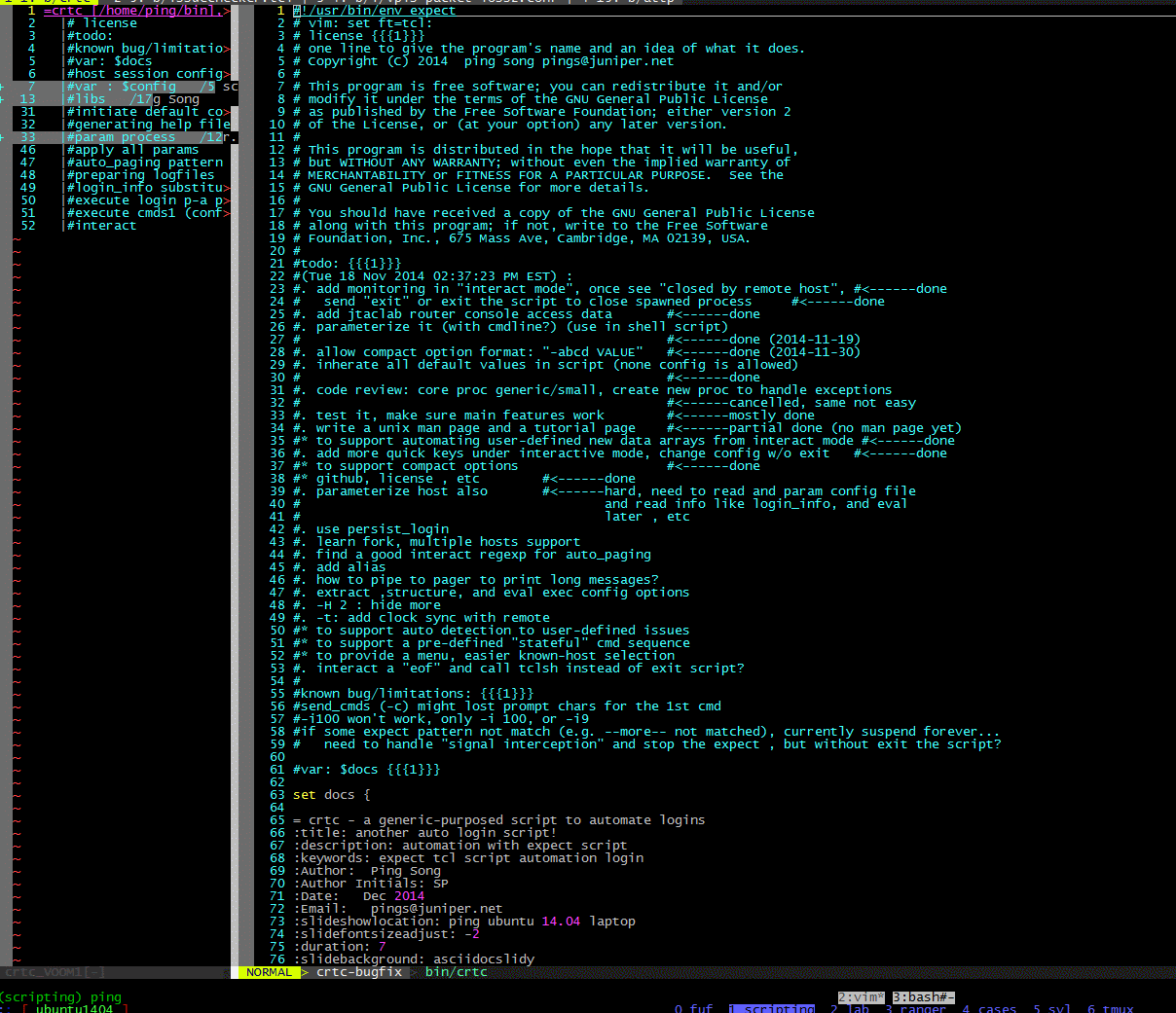script all in one with vim
I recently wrote a script, that makes it easy to automate interactions to remote hosts in shell script…but I’m not going to say anything about that in here…
I found it interesting to put everything in one file. source code, config file template, even help docs.
people may think it’s stupid - considering of “scalability”, a better idea is to program “modularly”… but just because of putting everything in one file does not necessarily means it’s NOT scalable.
the tool is vim VOom plugin - It seems not a problem to maintain 2M+ lines of texts (e.g. codes), and still you have a good overview of the whole structure. plus now you don’t need to spend much time to design the “interfaces” between modules . why breaking things into pieces when they can work just fine in one?
here is how the problems of “one-file” method can be worked-around:
-
when the script grows, it’s hard to maintain…
- with a code structure tree showing the whole code structure, it’s not a problem to get a highlevel overview to the whole file.
- you can jump back and forth between different points of a work flow quickly, without getting lost.
-
when you want to write the doc, change the tree from “code tree” to a “doc tree”
- now the document structure will be displayed in the tree, other things like the source code will be ignored.
- you can jump in the doc structure the same way as you do in the source code.

blog comments powered by Disqus